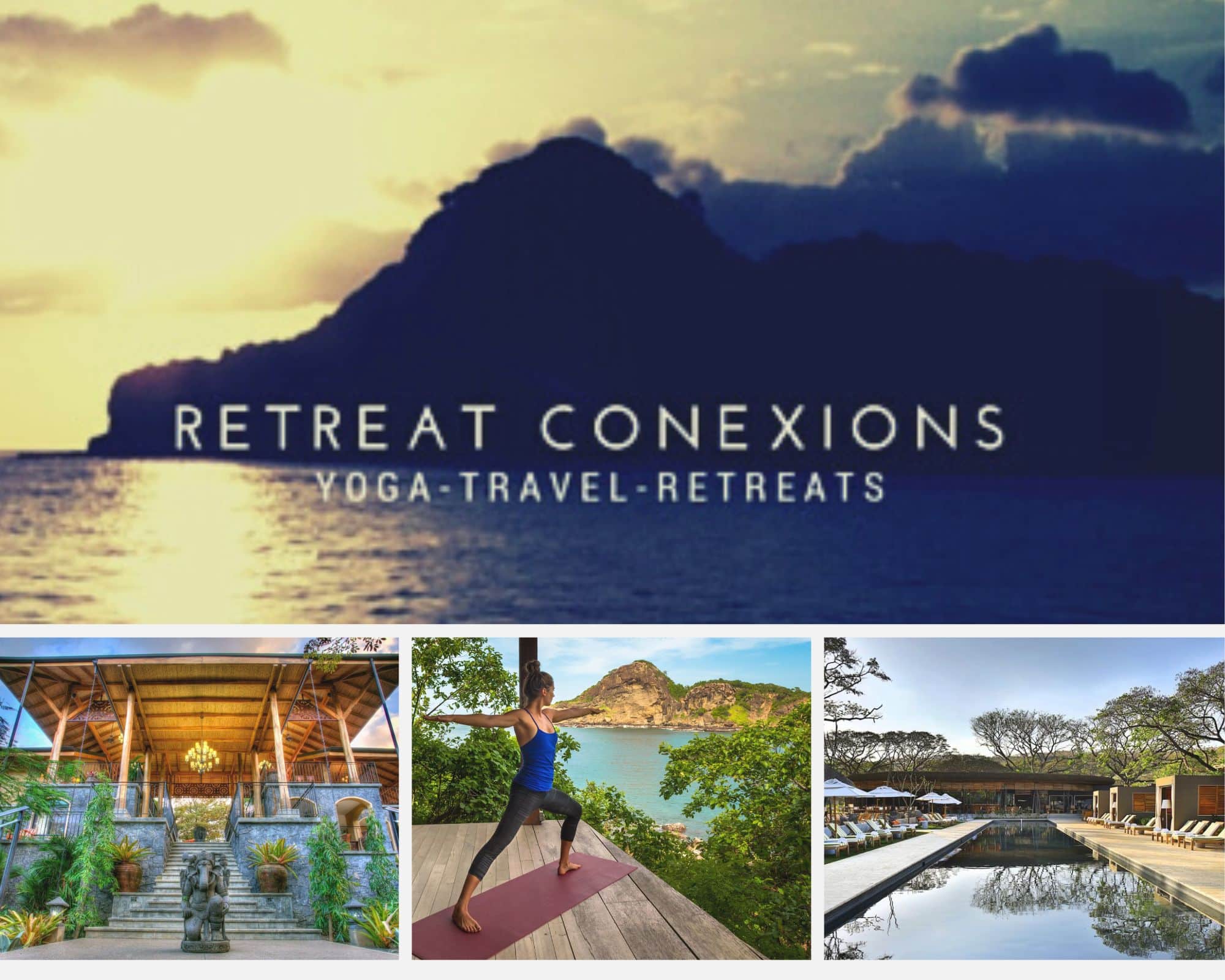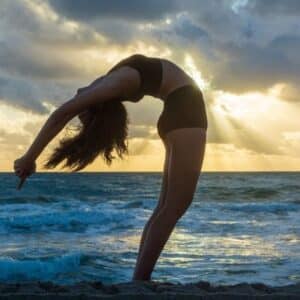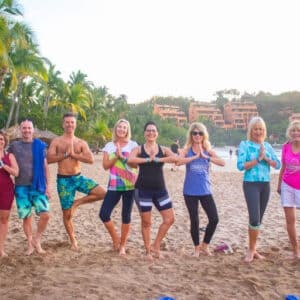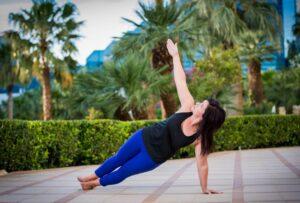Mallory Hazen
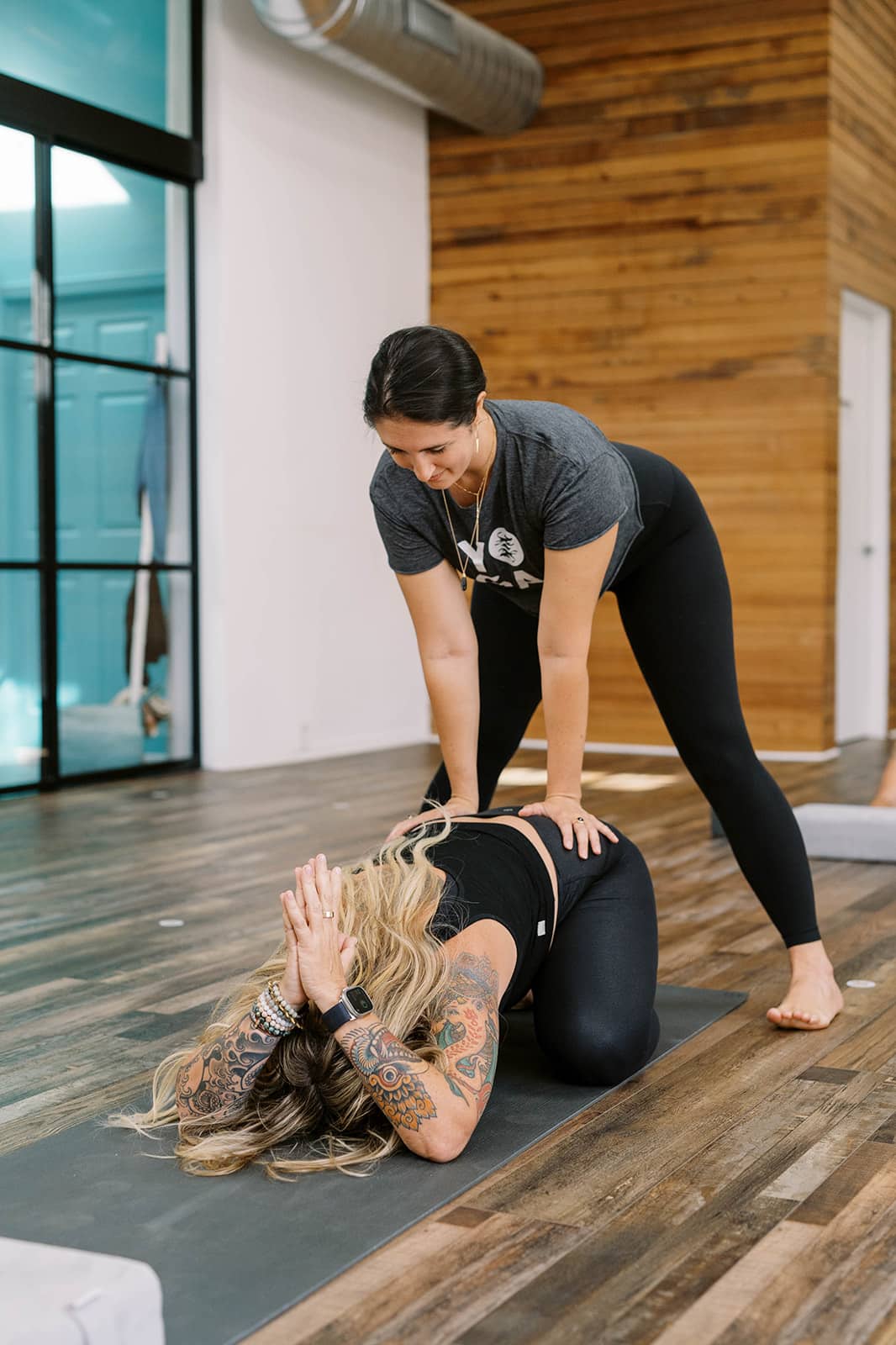
Long-Form Wellness Interview Series with Yoga Instructor & Dancer Mallory Hazen
Actionable insights and practical advice for your life, health, and business.
During this fascinating conversation with Mallory Hazen, yoga teacher, wellness coach, and lifelong dancer, we explore the intersection of movement, mindfulness, and personal growth. Mallory offers a unique perspective on the transformative power of yoga—one that is fluid, personal, and deeply connected to the body. Whether you’re curious about creating sustainable habits, addressing screen-time burnout, or finding your flow (on and off the mat), Mallory offers actionable advice that will motivate you.
In this interview, Mallory shares how she:
- turned her love for dance and nutrition into a holistic wellness career
- draws inspiration and life lessons from her students, including finding stillness in the chaos
- transformed an initial distaste for yoga into a flourishing teaching style that emphasizes freedom, curiosity, and connection
- recovered from a debilitating back injury using yogic principles of movement and mindset
Mallory also debunks common “yoga myths,” shares inspiring book recs (and other resources) for those looking to advance their practice and improve their lives, and much more! Her insights will resonate with wellness-seekers, entrepreneurs, creators, and folks seeking to align passion with purpose.
Dive into this interview and walk away with fresh perspectives on wellness, creativity, and the beauty of moving authentically through life!
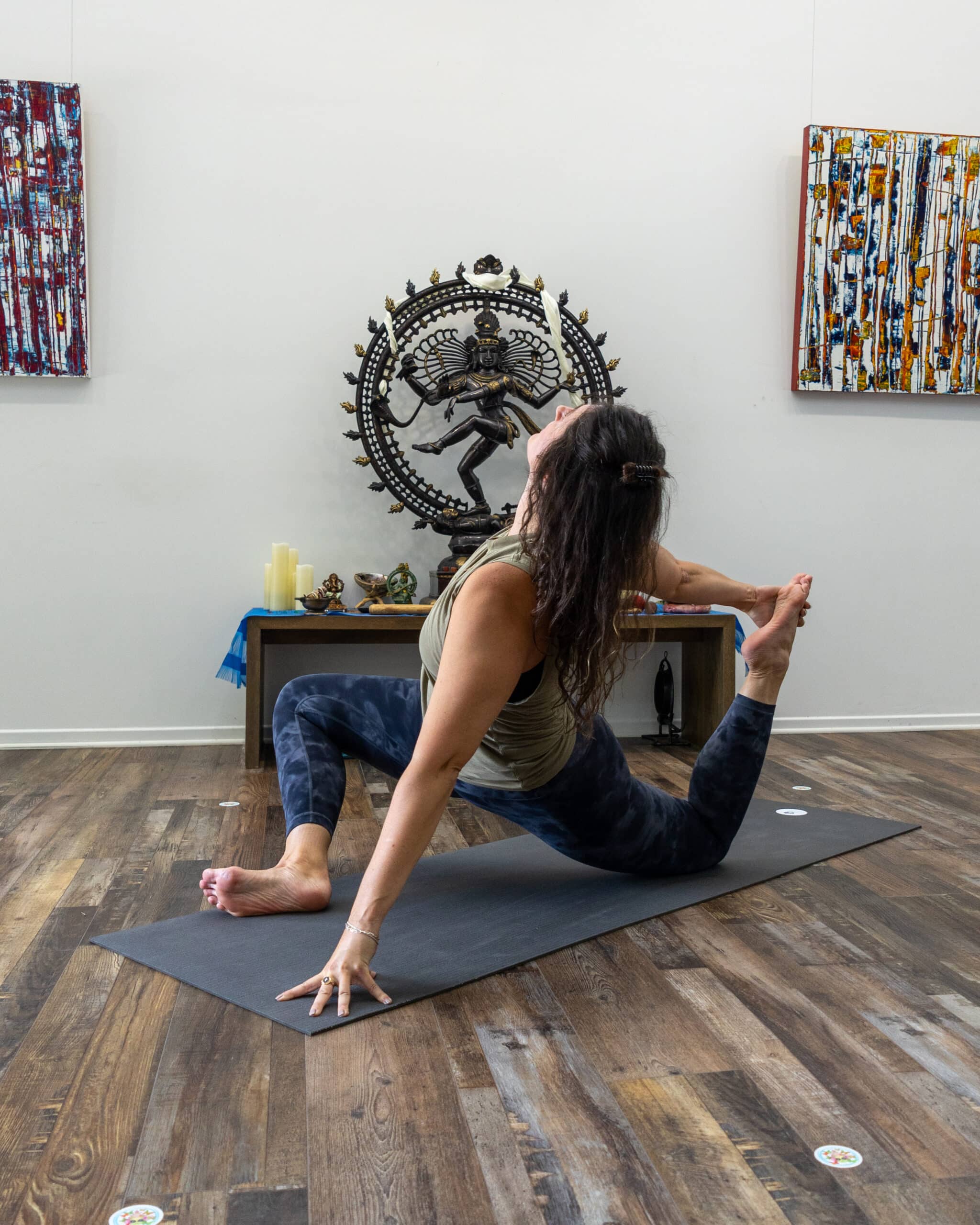
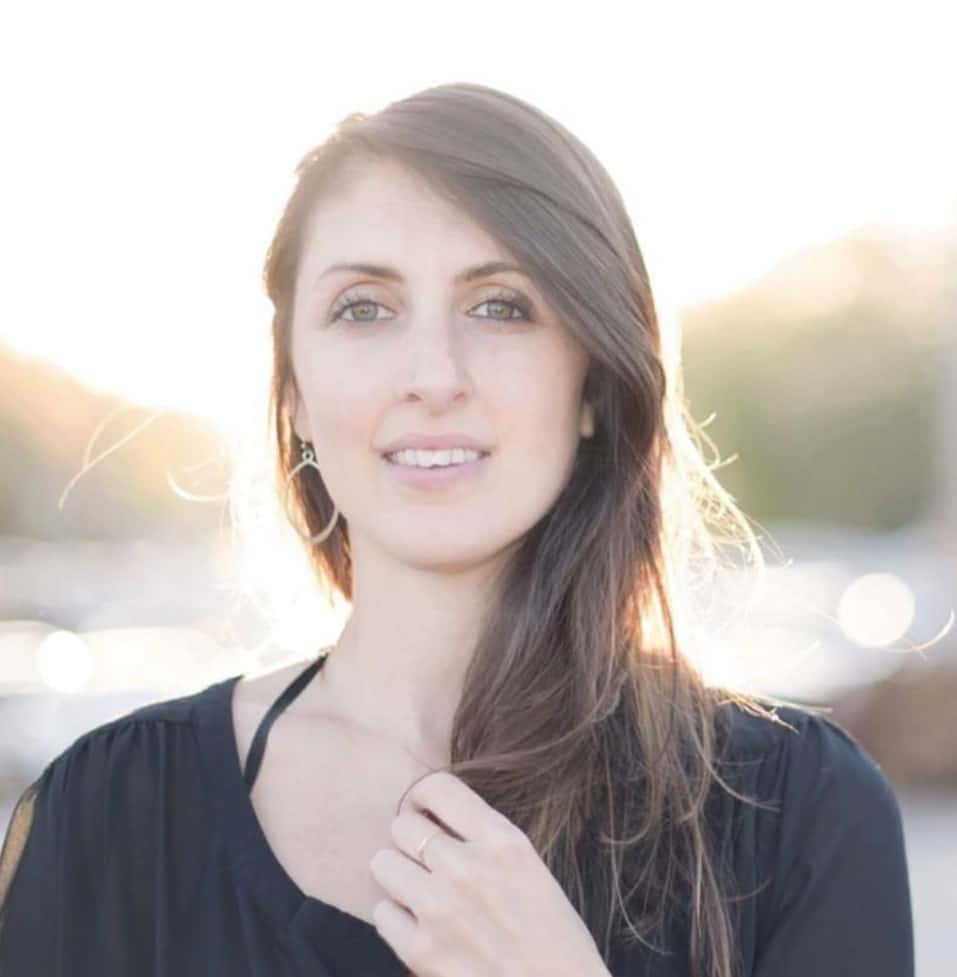
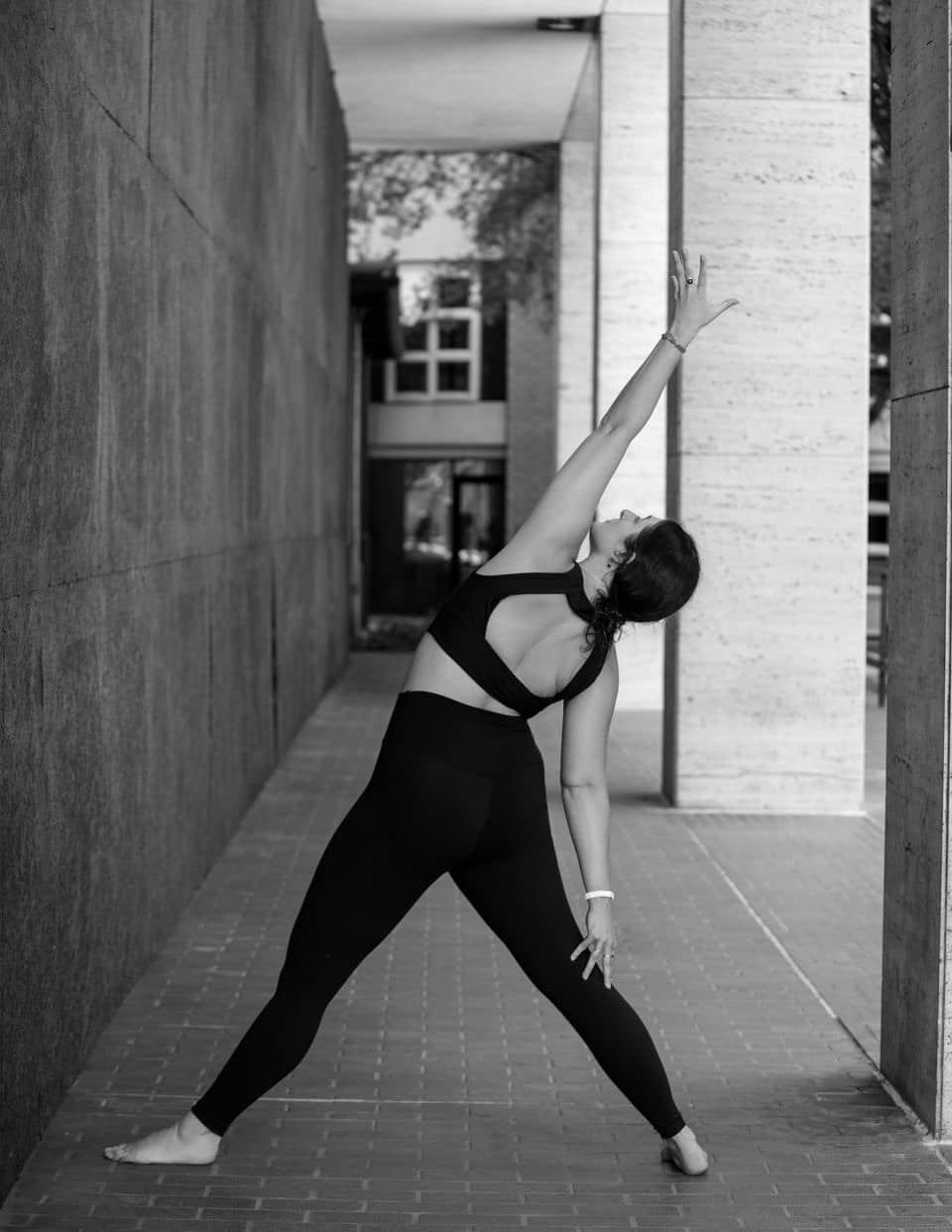
Anthony Mandela (AM):
All right, Mallory, let's hop right in! You’re such a talented person with so many interests—both in and beyond yoga. Could you tell me more about the things you’re most passionate about?
Mallory Hazen (MH):
Of course! One of my biggest passions is nutrition—I even have a master’s degree in it. Growing up in Vermont, where fast food wasn’t readily accessible, almost everyone had gardens or preserved their own food through freezing and canning. My family had a modest income, so these practices helped us eat well on a budget.
My mom was a young mother who prioritized keeping us active and eating healthy. We rarely relied on pharmaceuticals, opting for homeopathic remedies instead. That foundation shaped my lifestyle early on.
When I moved to Atlanta, I experienced a completely different culture around food. Many people didn’t know where vegetables came from or the importance of balanced meals. At the time, I was a professional dancer, teaching ballroom for 12-hour days, and I’d see people fueling themselves on fast food, coffee, and soda. It was so foreign to me.
I became passionate about sharing my knowledge and encouraging others to nourish their bodies better. This led to my journey into wellness coaching. I love nutrition, but I wanted something more holistic—something that combined mindfulness, movement, and healthy eating. Wellness coaching became the perfect way to bring all my passions together.
Oh, and I have to emphasize dance! It’s been a lifelong love of mine. I’ve danced professionally and taught for over 25 years. Dance influences my yoga practice by inspiring me to explore what feels good in my body. After years of strict choreography, yoga provides this beautiful space where I can listen to what my body truly wants.
AM:
That’s such an inspiring journey. With your dance background, how did yoga come into your life?
MH:
Honestly, I hated yoga at first! In college, I tried a hatha class, and it didn’t click with me. We held poses for long periods, and as someone who danced constantly, I wanted more movement. It felt too restrictive at the time.
Later, when I moved to Atlanta, I decided to try a local studio’s $30-for-30-days deal during the holidays. I went in with no expectations, just a mindset of curiosity. I ended up going every day and completely fell in love.
The classes were power flow vinyasa, which felt fluid and dancer-like—exactly what I needed as a “gateway drug” into yoga. But memberships were expensive, so I approached the owner about starting a work-trade program, where I could clean the studio or work the front desk in exchange for classes.
The owner was open to the idea, and I ended up being able to help implement the studio’s first work-trade program! That studio, Highland Yoga, now has multiple locations, and the work-trade program has become hugely successful. Immersing myself in the studio environment deepened my connection to yoga. Within a year, I knew I wanted to become a teacher.
AM:
What was your teacher training experience like?
MH:
I did my training through Highland Yoga while I was finishing up my master’s degree. Their program was power flow-focused, but I knew I wanted to bring something different to my teaching—something that allowed for more freedom, play, and introspection.
Later, I completed a yin yoga training, and it was a lightbulb moment. I began blending vinyasa and yin in my classes, experimenting with pacing, transitions, and space for personal exploration. My goal is to give students an experience that goes beyond movement—something deeply nourishing and empowering.
AM:
I’ve taken many yoga classes, but yours in Costa Rica stood out as one of the most fun and unique. Could you walk me through your approach to leading a class?
MH:
Thank you—that means a lot! My top priority is giving students permission to make the practice their own. Many classes say, “Do what feels good,” but don’t offer real options. I make sure students always have choices, whether that’s staying in child’s pose or exploring a more advanced variation.
I structure my classes with sequences that build progressively. We start with a baseline movement, then layer in complexity or variations with each round. I probably say “maybe” 40 times in a class—“Maybe try this,” or “Perhaps explore that.” It’s all about inviting curiosity.
My dance background also influences my teaching. I love creating fluid transitions and giving students the chance to feel the rhythm of their breath and movement. At the same time, I encourage them to stay calm and stable, even in challenging poses—a mindset that translates off the mat into everyday life.
"My dance background also influences my teaching. I love creating fluid transitions and giving students the chance to feel the rhythm of their breath and movement."
AM:
Your classes are indeed dynamic! As a follow up, if you were to teach a workshop, what topic(s) would you focus on?
MH:
One of my favorite workshops to lead is on transitions. Last time I led this type of workshop, we worked through a sequence of 10 poses, experimenting with different ways to move between them. Some participants focused more on the transitions than the poses themselves, which I loved: it’s all about finding what feels good in your body.
I’ve also led workshops on yoga fundamentals, nutrition basics, and yoga for digestion. For digestion-focused flows, we do simple, repetitive movements like child’s pose to upward dog, which stimulates the body’s natural processes.
AM:
Do you use music in your classes?
MH:
Absolutely! Sometimes I’ll use nature sounds for a more meditative vibe, but I also love playlists with strong rhythms. Certain flows can feel very lyrical and dance-like when paired with music, while others benefit from silence and introspection. It depends on the class and what energy I want to cultivate.
AM:
Your musicality definitely adds something special. It's not always easy to get up in front of people and lead a class or workshop. Why do you do it? What do you enjoy most about working with groups or one-on-one?
MH:
I think teaching comes naturally to me. I’ve always felt at ease in front of people, maybe because of my background as a performer. Oddly enough, the only time I’ve ever felt nervous was when I sang in front of an audience. There’s something about your voice being so vulnerable—it can waiver, and people notice.
When it comes to movement, though, I’ve always felt at home. I’ve had this innate need to move for as long as I can remember. There was even a year in my childhood when we’d just moved, and I hadn’t started dance classes at the new studio yet. I was dancing around the house so much that my mom finally said, “I don’t care if you’re nervous about the new place or don’t know anyone—you have to get back to class. You’re moving too much at home!”
That’s just me. Movement has always been a core part of my existence, whether it’s dance, yoga, or just how I navigate life. Growing up, we moved houses 13 times before I graduated high school. I think that constant change taught me to adapt fluidly, both mentally and physically. That adaptability shows in how I move and how I teach. I want to help others connect with their natural movement, free from judgment or pressure.
AM:
Have your students ever taught you something surprising?
MH:
Absolutely. One of the most powerful moments for me is when students find stillness. I’ll admit, I’m guilty of being in constant motion—there are too many things I’m passionate about, and I say “yes” way too often. There have been months where I haven’t spent more than 12 hours at home in a day.
But seeing my students—especially the ones who come to my Yin class every Monday—commit to an hour of silence and stillness inspires me. It’s a reminder that I need to give myself that same gift. Watching them fully embrace those quiet moments often almost brings me to tears.
AM:
What’s your biggest inspiration as a teacher?
MH:
My inspiration comes from creating a space where people can escape their heads and connect with their bodies. In dance, we’re so often told to look a certain way or hit a specific mark. I love offering space for improvisational movement, where people can just be.
In yoga, it’s similar. While alignment is important, I remind my students that these poses were all made up by someone at some point. There’s no ultimate right or wrong. I call it finding the “ish” shape—getting into a general pose and adjusting until it feels good in your body.
For me, it’s about giving people the freedom to feel what works for them without worrying about mirrors, comparisons, or perfection. On top of that, yoga adds a spiritual layer that lets us connect deeply with ourselves. It’s self-care in motion, and I love teaching tools people can take off the mat and into their lives.
AM:
Is there a teacher or class that’s influenced your style?
MH:
I’ve taken bits and pieces from so many teachers, but the most influential thing has been staying true to myself. I refuse to be inauthentic.
That said, there were a few teachers at Highland Yoga who stood out. The studio is very structured—you pretty much know what to expect in every class. But some teachers still let their personalities shine through that structure, which was so refreshing. They made yoga feel approachable and fun, without taking it too seriously.
One thing I learned from them is that yoga is not about nailing handstands or perfect poses. It’s about enjoying the moment—being there, in that space, with those people. I’ve carried that lesson with me. I never want to be a “yoga robot.” My classes should feel unique and personal, not like a carbon copy of anyone else’s.
AM:
Are there any yoga myths out there you’d like to debunk?
MH:
Pretty much all of them! But the biggest one I see in the U.S. is how yoga has been turned into a fitness trend. Yes, the poses and postures—the asanas—help our bodies gain strength and mobility, but the essence of yoga is so much deeper than just moving through a fast-paced power flow class.
People often tell me, “I want to take yoga, but I’m not flexible,” or, “I need to get more flexible before I can start.” That’s completely missing the point. Yoga isn’t about being flexible or achieving a certain aesthetic in your poses. It’s about making shapes that feel good for your body and finding presence in the practice.
Yoga, at its core, is about being—not just moving. It’s an opportunity to slow down, pay attention to how we feel, and activate our parasympathetic nervous system—something that’s often ignored in our fast-paced lives. Through this process, we connect with deeper principles like nonviolence toward ourselves and others, and non-attachment to what poses “should” look like or how we felt yesterday versus today.
The myth that you have to be a certain type of person to practice yoga or that yoga is primarily a workout is what I combat most often.
"Yoga, at its core, is about being—not just moving. It’s an opportunity to slow down, to pay attention to how we feel."
AM:
In the wellness field, is there something people are overlooking that has great potential?
MH:
The impact of screen time, hands down. I see it all the time, especially in my healthcare work. People’s schedules vary wildly—some work 12-hour night shifts, others have shorter but daily shifts, and some are constantly on call. But one constant across the board? Excessive screen time.
Think about it: five minutes on Instagram might show you a war zone, a newborn baby, a wedding, a job loss, and someone’s vacation. Our brains are not designed to process all of that so quickly. Add in hours of work on computers and TV in the evenings, and it leaves very little space to just be.
This constant screen use impacts mental health, sleep, productivity, and physical movement. We’ve become human “doings” instead of human “beings.”
AM:
What’s your advice for addressing screen burnout?
MH:
One of the most impactful things is putting screens down at least an hour before bed. I’ve been strict with this lately after working with a sleep therapist. I have a set bedtime and wake time, which also means a set “phone down” time.
What’s been amazing is how much that last hour feels like getting my life back. I use it to play with my cat, spend time with my partner, do my skincare routine, or prepare for the next day. It’s not only improved my sleep—I go to bed calm instead of mentally overloaded—but it’s also enriched my time with myself and the people I love.
AM:
Is there something you do consistently to set a positive tone for your day?
MH:
Walking, especially outside. Research shows significant benefits for quality of life and chronic illness prevention when people get 7,000 steps or more daily. Personally, I aim for three 15-minute walks throughout the day.
Being outside and moving—combining the two if possible—is my ideal. It breaks up my workday and re-centers me.
AM:
Do you have any quirky habits or unique things that you love (or love to do)?
MH:
Oh, where do I begin? Lately, I’ve been making everything into a dance move—picking something up from the ground always involves a leg swing or some theatrical flourish. I’ve also started doing silly voices to make my partner laugh, which ties into my secret wish to be a stand-up comedian.
One habit my housemates point out is my Neutrogena commercial-style face-washing. I somehow manage to splash water everywhere—like, an ocean out of the sink. But hey, it’s my process!
AM:
What advice would you give to someone looking to deepen their yoga practice?
MH:
Practice non-attachment. Social media often skews our perception of yoga—we think we need the right clothes, body type, or skill level to practice. The truth? Just show up as you are.
For beginners, focus on being present, even in moments of discomfort. For those advancing, it’s about staying open and not boxing yourself into a rigid idea of your practice. Our bodies change over time—injuries, aging, and life experiences shift what yoga looks like for each of us.
True advancement comes from exploring the philosophy behind yoga, like the yamas and niyamas, which emphasize principles like nonviolence and non-attachment. It’s about going beyond the poses to bring these teachings into your daily life.
AM:
Can you share a time when you faced a challenge and what you learned from it?
MH:
A few years ago, I had a back injury—a severe herniated disc—that would cause spasms, leaving me bedridden for weeks. I’d recover enough to move a little, then relapse. For about a year, it felt like a constant cycle of pain and retreat.
I initially avoided movement, thinking rest was the answer. But I learned that what I needed was the opposite: strengthening and engaging the areas that were causing me pain. Slowly, I incorporated walking, yoga, and strength training, with a focus on my glutes, hips, and back.
The discomfort was challenging, but working through it brought so much relief and strength. It taught me that retreating from discomfort isn’t always the solution; sometimes, leaning into it and finding ways to move forward is what heals.
AM:
Thanks for sharing that, Mallory. I really appreciate it. I like for my posts to offer something that resonates with entrepreneurial-minded folks—creators and builders. Think about someone just starting out on that journey; given what you’ve learned from your own experience, what advice would you offer them?
MH:
Oh, this is a fun one. The biggest lesson I’ve learned is that while role models and mentors are valuable, you ultimately need to know yourself well enough to stay authentic throughout your journey. For example, after finishing my teacher training at Highland Yoga, I realized their fast-paced, power flow style didn’t resonate with me. So, I took six months off yoga entirely to reflect. That break allowed me to rediscover what felt true to me and to find teaching environments that aligned with my values.
The same goes for my path in nutrition. Despite earning a master’s degree, I chose not to pursue a dietitian credential because I didn’t align with the USDA and FDA frameworks. This holistic approach has made it harder to find jobs and earn “traditional” credibility, but it’s enabled me to integrate all my passions into wellness coaching, an area where I thrive.
My advice would be step outside the box society tries to fit you into. It might take longer, but staying true to your passions and priorities will create opportunities for alignment and growth.
"You ultimately need to know yourself well enough to stay authentic throughout your journey."
AM:
That’s inspiring. Out of curiosity, how do you approach your wellness consultations with new clients?
MH:
Well, my approach is simple: I consider the client the expert on their own life. My role isn’t to dictate what to do but to help them identify their goals and create small, sustainable steps toward them. For example, if someone struggles to find time for exercise, we might start by tracking unused 20-minute windows in their day. It’s all about building awareness and momentum through achievable actions. Big, sweeping changes often fail, but incremental progress sets people up for success.
AM:
Great perspective. Is there any wellness advice you think people should ignore?
MH:
Oh, plenty! For starters:
- The “low-carb” diet. There’s really no universal need to go low-carb.
- Overemphasis on cardio as the “best” form of exercise. Building strength is just as important.
- The weight of muscle vs fat. Actually, muscle doesn’t weigh more than fat; a pound is a pound.
- The eight glasses of water myth. You don’t need eight glasses of water a day, you should drink half your body weight in ounces instead.
I also hear people say/think they can cut calories endlessly to lose weight, but that approach often backfires as the body adapts by holding onto fat. Sustainable nutrition is key, not crash diets or extreme measures.
AM:
I love this list. How about a book recommendation to share?
MH:
Atomic Habits by James Clear is a fantastic resource. It aligns with wellness coaching by emphasizing how small habits compound over time. Another great one is When by Daniel Pink, which explores the science of timing—when we’re most productive, when to take breaks, and how timing affects performance. Both books have helped shape my understanding of personal and professional growth.
AM:
Thanks for those! What’s been one of your most worthwhile investments or time, energy, or money?
MH:
Moving to Atlanta. It pushed me out of my Vermont comfort zone and into an environment full of new opportunities. Building meaningful relationships here has been key to my growth. Atlanta’s diverse, culturally rich atmosphere has allowed me to explore and thrive in ways I couldn’t have imagined. There's something about this city where it feels like people are just able to just be themselves. There's a very anything goes vibe here, which I love.
AM:
I'm curious if you're working on something exciting these days—any projects or goals that really motivate you? Anything you'd like to share?
MH:
Definitely. I have a long-term goal of doing more work remotely, so I’m always considering how to make that happen while staying true to the type of work I love. Lately, I’ve been developing self-paced course content to help people get started in nutrition and wellness. That’s a bit outside my typical realm, but it’s exciting to branch out.
Another focus for me is leading more retreats and incorporating workshops. I’ve realized I work in bursts—intense, high-energy periods where I’ll create a lot, followed by rest phases. For example, I might spend three days fully immersed in creating nutrition content, then not touch it again for months until inspiration strikes. Understanding and leaning into that rhythm has been a game-changer.
By the way, have you heard of Human Design?
AM:
I don’t know a lot about it. If I recall correctly, it’s about how we work and live. Kind of a mix of personality and energy, right?
MH:
Exactly. It’s rooted in astrology, so you enter your birth details, but the insights feel very specific—like they couldn’t apply to just anyone. When I learned my type, “Manifestor,” it explained so much. Manifestors are the creative forces of the world, with big-picture ideas and bursts of intense energy. For example, if I were planning a retreat, I’d dive in and have everything booked—dates, location, guest list—in three days. Then I’d need a rest period. Here’s the link to the quiz: www.jovianarchive.com/get_your_chart. You should try it! I bet I can guess what your type is. 😊
AM:
I look forward to checking it out! Shifting gears a little—since you’re a veteran retreat leader, can you give us a preview of what it will be like to spend time with you in Costa Rica? What can participants expect?
MH
This retreat to Bodhi Tree will be different from our last one, but a few things will stay the same. On our previous retreat, we offered a wide variety of yoga—from Yoga Nidra to my playful, dance-inspired flows. We had a great group, and people mingled easily, even if they came with friends or partners.
We encourage participants to make the experience their own. Whether you attend every yoga class or skip them entirely, that’s okay. It’s about what you need—enjoying Costa Rica, our classes, or just relaxing.
For this upcoming 2025 retreat, Rebecca Steele and I will be blending yoga with elements that are slightly outside the traditional scope, like yoga therapy and lifestyle curation workshops. Rebecca will bring her expertise in yoga therapy, while I’ll focus on wellness and lifestyle. Our goal is to help participants connect their before and after retreat experiences, using the retreat as a catalyst for positive change.
We’ll give participants tools to integrate what you learn into their lives. For example, if your goal is to practice more yoga, embrace mindfulness, or fuel your body better, we’ll guide you before, during, and after the retreat. It’s all about creating lasting change.
AM:
Beautifully said. Thank you, Mallory. You’ve been so generous with your time! Is there anything I forgot to ask or anything you’d like to add?
MH:
Nope, I think we covered everything. Thanks so much for taking the time to chat.
AM:
How can people connect with you or learn more about what you do?
MH:
My website is malloryhazen.com, and my Instagram is @_malloryhazen.
AM:
Perfect. Thanks again, Mallory. Have a great rest of the week!
MH:
Take care, Anthony. I look forward to our next conversation!
Reader Note: Thanks for taking your valuable time to read this long-form interview. I hope these stories help you discover inspiration and advice that improves your life in a meaningful way.
Interested in receiving a periodic newsletter with curated, quality content (edited, long-form interviews) from successful fitness professionals around the world? If so, I’d love it if you would sign up here.
Are you a professional in the fitness industry with over five years teaching experience? Would you like to learn more how my retreat leader matching and logistics services can help propel your business to the next level? If so, please take 5 minutes to tell me more about your goals, experience, and areas of expertise here.
